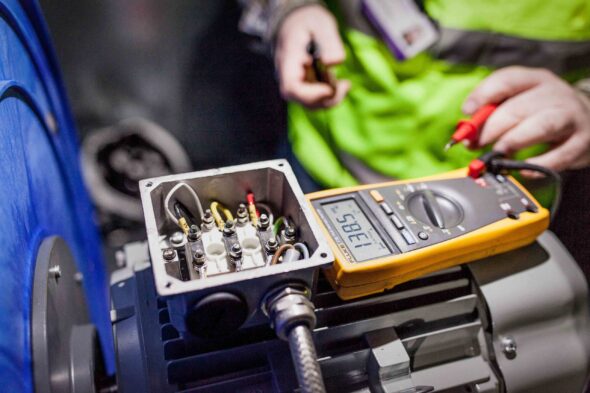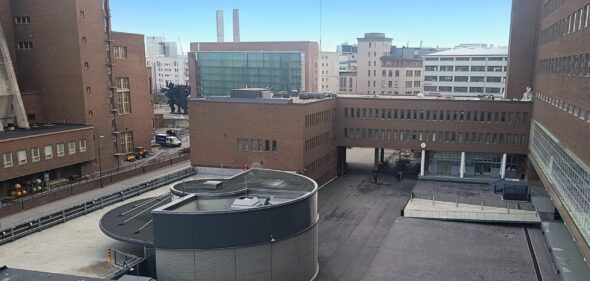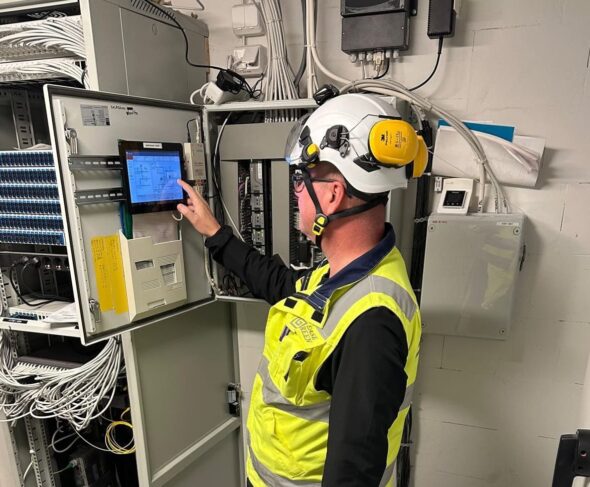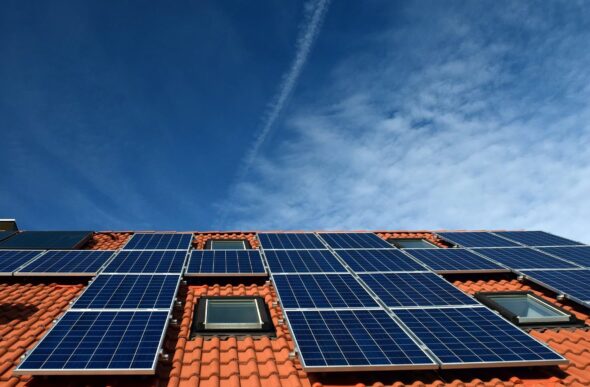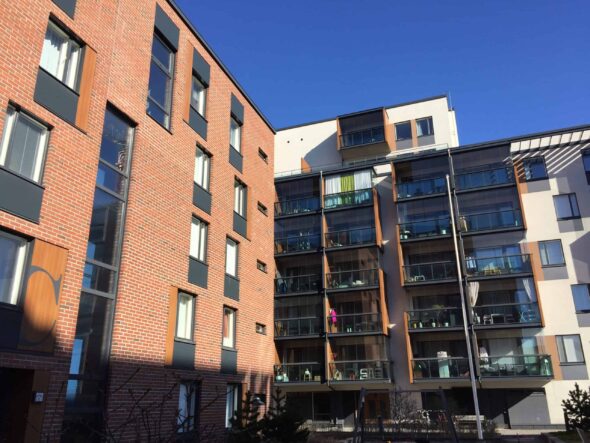Heating is the single largest expense in Finnish housing companies. Finnish winters – and sometimes summers – are quite cold. When it’s 30 degrees below zero outside, saving money by compromising on indoor temperature is not an attractive option. Instead, an energy renovation can introduce a more sensible form of heating and cut heating bills by less than half.
The importance of the environmental friendliness of the heating system should not be underestimated either. District heating is a typical form of heating for housing companies in Finland, but it is always produced using fossil, i.e. non-renewable, energy sources. Some Finnish housing companies still use oil heating – trendy retro, or is it time to join the rest of us in the 2020s?
Geothermal energy uses energy stored in the ground to heat a house. The energy is extracted from a well drilled in the ground and fed into a water heating system using electricity. The electricity consumption of this system is much lower than direct electric heating, and with Nordic green electricity, the environmental impact is also very low.
Does geothermal heating save the housing company money?
The initial investment for geothermal heating is between €100 000 and €300 000, depending on the size of the housing company. However, geothermal heating usually brings savings of 50-70% on the heating costs of the housing company.
The savings in euros that geothermal heating can bring to a housing association can be estimated by knowing the original form of heating, the size of the association and the cost of the energy used for heating. The cost of using geothermal heat is significantly lower for a housing company than other forms of heating.
Oil and fossil fuel district heating prices are unpredictable because they are sensitive to cyclical fluctuations. They are currently under strong upward pressure. A blip in the wrong corner of the world can easily send prices soaring, and the same is true of a housing association’s heating bill.
Geothermal heat, on the other hand, comes from the domestic soil right next door. After the initial investment, your heating costs will remain stable for a long time, regardless of the weather and world events.
What is the actual payback period for geothermal heat?
A simple estimate of the payback period for geothermal heating can be calculated by dividing the total initial investment cost of the system by the annual savings it will bring. The age, size and location of the building will influence the heating costs before the installation of geothermal heating and therefore the savings that can be achieved.
Let’s take an example. Let’s say you are sitting in a board meeting of your 30-apartment building. No buns were bought for the meeting because last month’s heating bill was absurdly high and the astute chairman decided to cover the extra costs by cutting the meeting bun expenses.
To the President’s infallible logic, you can throw the following counter-ball. In a 30-apartment building, the typical cost of installing geothermal heating is around €300 000. The normal annual heating costs for the building would be around €50 000 with district heating – this year you can deduct the meeting costs, i.e. €7. The building in question has been using district heating in the past, the price of which is already rising and is under strong upward pressure in the coming years, and therefore your net savings from switching to geothermal are high.
For example, a 60% saving in annual heating costs would save €30 000. By comparison, to achieve the same savings, you would have to skip buying buns for 4 286 board meetings. In this case, the payback period for geothermal heating in your housing association would be about 10 years years.





